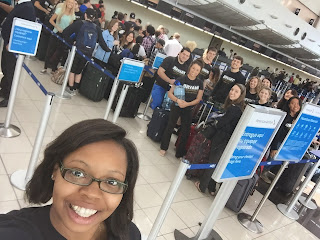In
early January, we had the opportunity to travel to beautiful Costa Rica. With a
keen eye on sustainable practices, we researched the practices of hotels,
plantations, and the societal system as a whole. While traveling our group
specifically investigated Eco-tourism and how sustainability practices have
influenced this industry. Now
this may seem easy, considering almost everything we did in Costa Rica was
associated with ecotourism in some capacity. However, if you did not listen
closely to the people who supported the places we visited, many of the
wonderful sustainable actions taken to protect these ecological destinations
would be missed.
 |
| Tortuguero Recycling Plant |
 |
| Tortuguero Town |
One location in particular,
Tortuguero, exemplified what it means to be a sustainable eco-tourist location.
When we look at Toruguero we think about the turtles laying their eggs on
pristine beaches throughout the fall months through to January. But what we do
not immediately consider is how the community as a whole works together to
protect their beaches and their turtles. Through the Sea Turtle Conservancy and
other local programs, the town educates its community members on the importance
of conservation for the local economy. Torutguero is often used as a prime example
of sustainable practices and how nature, economics, and the livelihood of a
society and its ecosystem can run full circle.
Another
prime example of eco-tourism in Costa Rica was the beautiful Arenal Volcano
location. This beautiful landscape attracts thousands of tourists due to the
amazing sights as well as the ever relaxing hot springs. These hot springs,
naturally heated from the volcano, created an amazing opportunity for locals to
create a business entirely ran on their natural resources. Using the natural
environment as a source of tourism helps protect the environment as well as
providing an economic boost to the surrounding communities. This example also
runs perfectly parallel to an amazing experience we had in Sarapiqui when we
went white water rafting through the jungle. Once again, the local economy was
able to substantially benefit from using their natural environment as a source
of tourism while still maintaining a sustainable practice.
Overall,
it was incredible to witness just how conscious the Costa Rican society is
about their sustainability practices. The local economy, people and environment
are put in such a high regard that a great deal of commitment is put towards
creating an eco-friendly tourist state. There is so much that can be learned
from the way Costa Rica operates from an eco-tourism perspective that much of
what they do can and should be implemented in the United States. It is our hope
that our community continually changes to create a more sustainable society.

Ecotourism Group Blog~ Talia Alexander, Emily McLaughlin, Billy Carroll, Marco Addonizio














































